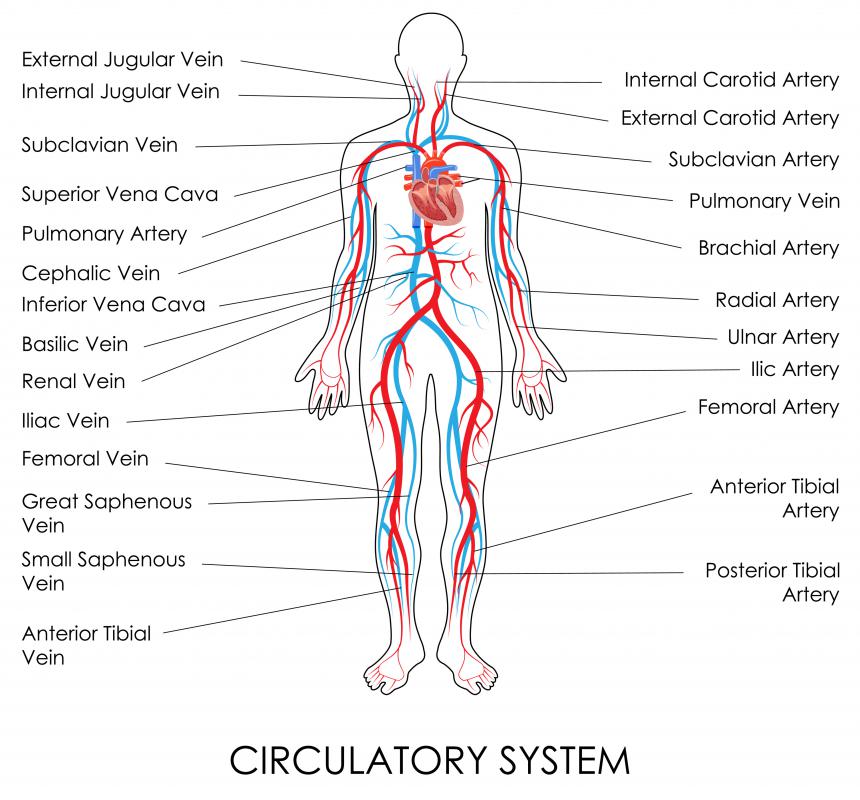At TheHealthBoard, we're committed to delivering accurate, trustworthy information. Our expert-authored content is rigorously fact-checked and sourced from credible authorities. Discover how we uphold the highest standards in providing you with reliable knowledge.
What is Chyle?
Chyle is a bodily fluid with a milky appearance that is a combination of lymphatic fluid, or simply lymph, and lipoproteins called chylomicrons. It originates in the small intestine during the digestion of foods with high fat content, and enters the lymphatic system through lymphatic capillaries called lacteals. Chyle is transported through the lymphatic system and eventually drains into the thoracic duct, a large lymphatic vessel found on the left side of the torso. This fluid is associated with a condition called chyle fistula, in which lymphatic fluid leaks from the lymphatic vessels.
Lymphatic fluid is similar in composition to blood plasma and is one of the main components of chyle. The fluid begins in the circulatory system, then exits the blood vessels and becomes known as interstitial fluid, or the fluid found between cells. Interstitial fluid transports important materials to the body's cells, such as hormones and oxygen, and also bathes the cells, removing foreign materials from them. The majority of this fluid then reenters the circulatory system, but about 10% of it enters the lymphatic vessels instead, where it becomes known as lymphatic fluid. Lymphatic fluid moves upwards through the body via lymphatic vessels, and one of its major functions is to transport fats from the digestive system to other bodily tissues where they can be either metabolized or absorbed.

The other major components that give the fluid its milky consistency are globules of fat and protein called chylomicrons. Chylomicrons are largely composed of triglycerides, which are fatty acids found in vegetable oils and animal fats. Triglycerides make up a large portion of the average person's fat consumption, and contain large amounts of energy. Within the villi of the small intestine, these fatty acids are combined with proteins and cholesterol, a steroid involved in metabolism, to form chylomicrons. It is important that the fats be packaged in this way because both blood plasma and lymphatic fluid are watery, and fat molecules alone are hydrophobic, meaning that they are repelled by water.

Lacteals are specialized lymphatic capillaries that absorb the chylomicrons from the intestinal villi and then transport the resulting chyle. As the lacteals move upwards through the body, they branch out into a network of larger lymphatic vessels. These vessels converge at the thoracic duct, where they drain their contents. The thoracic duct then drains into the left subclavian vein, where the chylomicrons in chyle enter the circulatory system. The blood transports the chylomicrons to different tissues in the body, where they are either stored or metabolized and used for energy.
AS FEATURED ON:
AS FEATURED ON:














Discussion Comments
The human body contains so many substances. It seems that I learn about a new one every few months!
I had never heard of chyle before. Many things are covered in high school biology classes, but mine totally skipped over chyle.
@JackWhack – I had to follow the chyle leak diet myself for awhile. You really don't realize how much fat you have been taking in on a regular basis until everything you were used to eating suddenly is off limits.
If I ate fruit or vegetables, they had to be either fresh or steamed. I could only eat cereals that didn't contain any fat, and I could only use skim milk.
When I cooked meat, I couldn't use any butter or oils. I even had to use fat-free salad dressing!
You can add flavor to your friend's food with spices and herbs, though. So, if you decide to make grilled chicken, even though you can't use butter or leave the skin on, you can add cumin or chili powder to make it interesting. If you make this along with a plate of steamed broccoli and carrots, you would have a meal that isn't half bad.
My neighbor got injured in a car wreck last week, and he developed a chyle leak in his neck. The doctor told him that he would have to eat a special low-fat diet to keep his body from making much chyle. He said that this would give the leak time to stop, so he wouldn't have to have surgery.
We used to eat dinner together once a week, but now, I have no idea what to make for him. He will be coming home from the hospital soon, and I intend to take food over to his house, but I want to make sure I don't prepare anything he can't eat. Does anyone know what sorts of foods will be okay for this kind of diet?
Post your comments